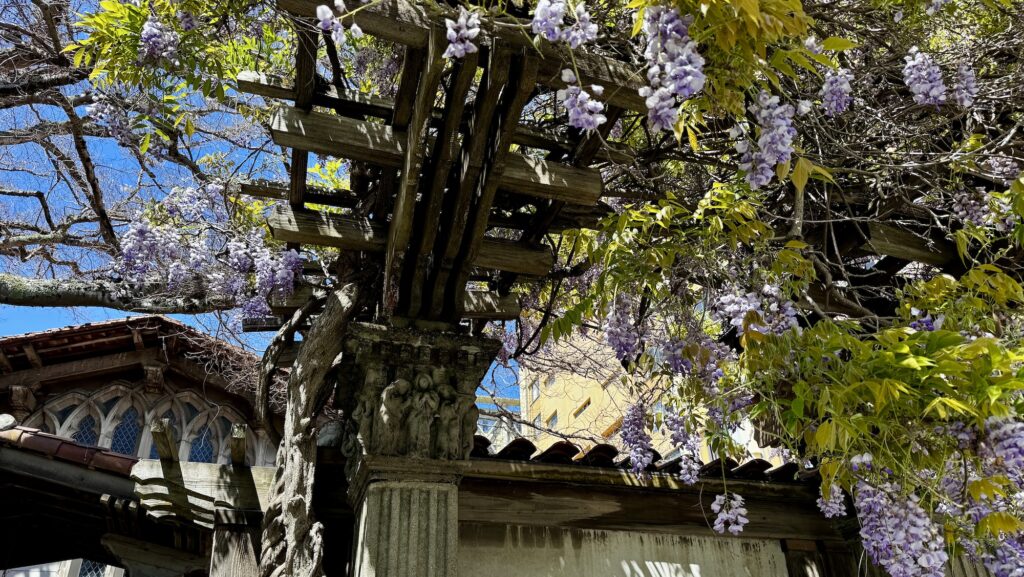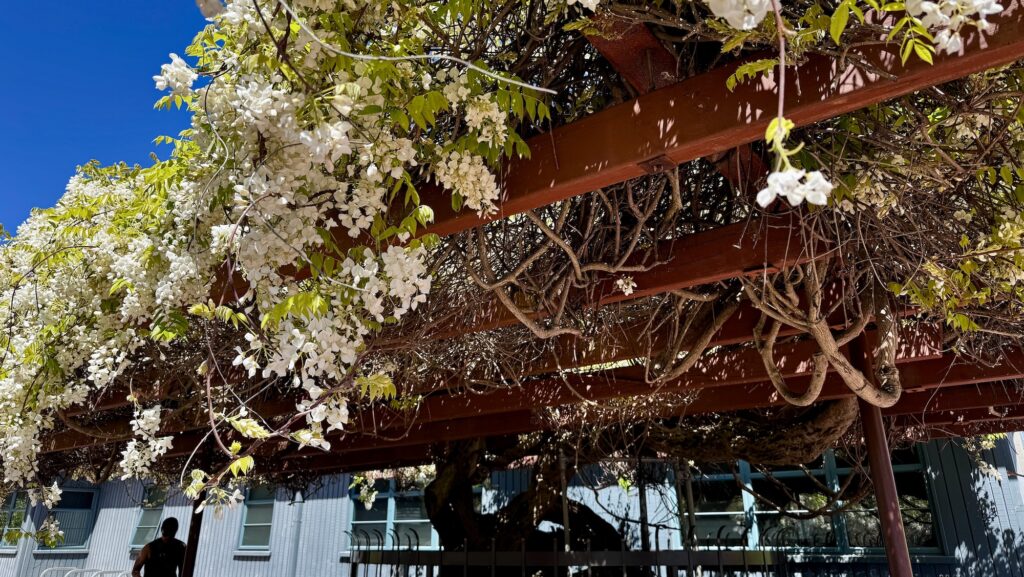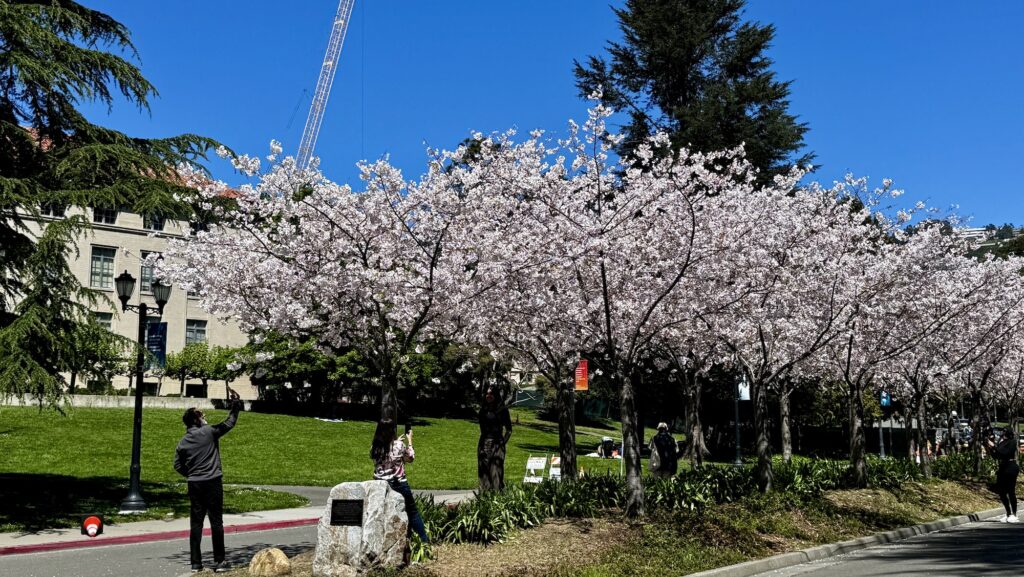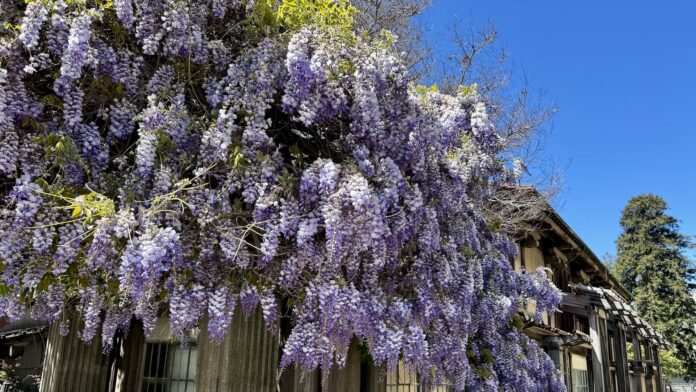April and May are among my favorite seasons in Berkeley, California, for this simple reason: it’s the time when the wisteria blooms. All over the city, you can find gnarled trunks (some more than a century old) that transform from bare to festooned with heavy blooms of purple or white. The plant can take decades to first flower, and can grow to be a century old.
Some of Berkeley’s wisteria blooms are famous: At the First Church of Christ, Scientist (2619 Dwight Avenue near the UC Berkeley campus), a national landmark building designed by Bernard Maybeck in 1910, wisteria takes over the Dwight Avenue side of the building each spring. It’s a startling sight, and sometimes when I drive past it I see other people who have pulled over to stare at it.

Across town, Live Oak Park is great for all sorts of reasons, including the stream that flows through the middle of it, its arts center and theater, and its big rolling hill grassy lawn that’s dotted with picnickers on warm days. But come spring, I visit for another reason: its unusual, almost-treelike wisteria that stands just outside the community center.
Wisteria spotting in Berkeley is a great excuse to take a walk. And walking through Berkeley’s neighborhoods and paths is, in my opinion, the best way to enjoy the city. Berkeley houses and yards have a particular charismatic funkiness that’s unique, and that makes walking feel like sightseeing.

Beautiful old houses and cute bungalows—some tended, others held together by benign neglect—are surrounded by wild gardens. Flowers and plants love the climate here, and grow and bloom throughout the year. In addition to spotting great wisteria, you might also see other climbing blooms like trumpet vine and bougainvillea.
Other ways to enjoy flowers in Berkeley
With spring comes an insane display of cherry blossoms on the UC Berkeley campus. During this time, you’ll often see robe-clad students taking early graduation photos. Standing underneath these trees as a gentle breeze rains down individual blossoms feels like a magical rain.

Berkeley also has botanical gardens. The UC Botanical Garden is home to more than 10,000 types of plants on its 34 acres. Up the hill, Tilden’s Botanical Garden is a lovely tangle of paths that lead you into redwood forests, into meadows, and into dry desert environments. The Berkeley Rose Garden (across from Cordonices Park) is another great spot if you’re a fan of roses. I’m also including honorable mention Blake Garden, a 10-acre garden owned by UC Berkeley and tended by the university’s College of Environmental Design, but is in the neighboring town of Kensington.



